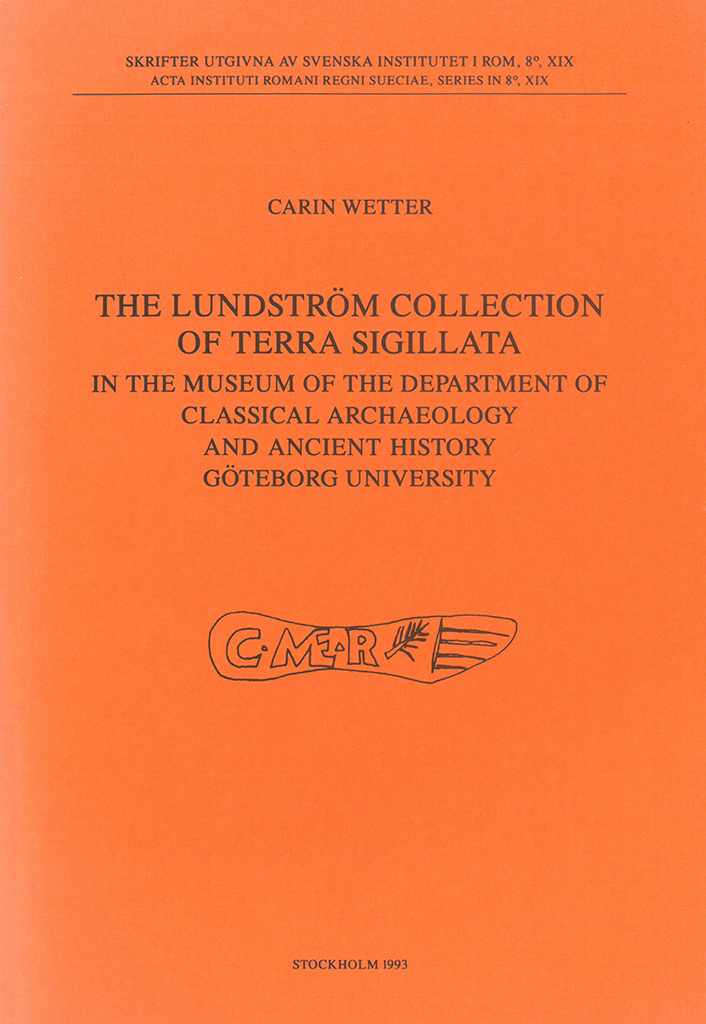Open access, use links below. Printed edition distributed by Eddy.se AB. Also available at Amazon.com, Amazon.de, Bokus.com, and Adlibris.com. Mastos in the Berbati Valley. An intensive archaeological survey By Michael Lindblom & Berit Wells (eds.) This study presents the results of a small but intensive surface survey conducted on the Mastos Hill in the Berbati Valley in 1999. While remains from the Early and Late Helladic period were known from previous excavations on its southern and eastern slopes, this is the first analysis of the entire hill. It includes a digital documentation of the local topography as well as an account of the archaeological remains retrieved in the field. The study fills a gap in different data sets and results gained through old excavations and the extensive 1988–1990 Berbati-Limnes survey. The introductory chapter summarizes previous work in the valley, discusses its ancient routes of communication and outlines the method employed in the archaeological survey. This is followed by an account of the topographical survey and the geographical information system used. In the six following chapters the archaeological remains are presented and analyzed in a diachronic fashion. It is concluded that the hill was predominantely settled in prehistory with the exception…
Distributed by Astrom Editions. The Synagogue of Ancient Ostia and the Jews of Rome. Interdisciplinary Studies Edited by Birger Olsson, Dieter Mitternacht & Olof Brandt In March of 1997 a research project on the ancient synagogue began at Lund University, Sweden, continuing a tradition of research that has its roots in the 1930s. The project’s title “The Ancient Synagogue: Birthplace of Two World Religions” suggests that Judaism and Christianity existed for a time in close proximity to each other and were shaped by the same particular milieu within the ancient world, namely, the synagogue. The synagogue in ancient Ostia was chosen as an initial case study, since there is evidence that it was built during the first century CE and consequently is one of the earlier synagogues in the Roman world to have been excavated. Olof Brandt presents for the first time a more extensive description of the area outside the city walls where the synagogue was built. Anders Runesson surveys all the material that has been published about Ostia in order to make a new reconstruction of the synagogue’s history in Ostia. Magnus Zetterholm attempts, primarily with the aid of interpretative theories and general considerations, to sketch the relations…
Distributed by Astrom Editions. See record at WorldCat. From huts to houses. Transformations of ancient societies. Proceedings of an international seminar organized by the Norwegian and Swedish Institutes in Rome, 21–24 September 1997 J. Rasmus Brandt & Lars Karlsson, eds. The present volume contains 43 of the 43 announced papers and 11 posters presented at an international conference in Rome in 1997. In a cross-cultural context, the papers examine various aspects of transformation processes connected with architectural changes, covering themes such as building types and development, building function, building technology, and finance and organization. Within this framework, the investigations span a long era, extending from the Mesolithic period to modern times, including experimental reconstructions of ancient dwellings. From the geographical and cultural point of view the contributions cover the Middle East and Europe from the Arabian deserts to the Arctic Ocean, though with a slight emphasis on central Italy in the Iron Age. The last article is a translation from Swedish to English of a study on shepherd huts in the Roman campagna made by S. Erixon in 1932, an article often quoted in studies on primitive architecture, but not easily accessible to all. Bibliographical information J. Rasmus Brandt &…
Distributed by Astrom Editions. The Lundström collection of terra sigillata in the Museum of the Department of Classical Archaeology and Ancient History, Göteborg University By Carin Wetter This study is and investigation of the collection of stamped terra sigillata sherds which is stored at the Museum of the Department of Classical Archaeology and Ancient History at Göteborg University. The sherds were bought in 1909 by Vilhelm Lundström, the professor of Latin at the newly founded Göteborgs Högskola (1891), when visiting Rome with his students. It is argued that there are reasons to assume that the sherds were not only bough in Rome but that they were also found there, as was, for example, the well-known Riese Collection, bought there at the same time, and furthermore that this was due to the extensive excavations alongside the River Tiber when the embankments were built. The aim of the investigation is to interpret the stamps, to identify the workshops and, if possible, to establish the shape of the vessel of which the sherd was once a part. For this purpose, the description of the stamp has been complemented with photographs and meticulous drawings. To facilitate the difficult task of establishing the shape of…




